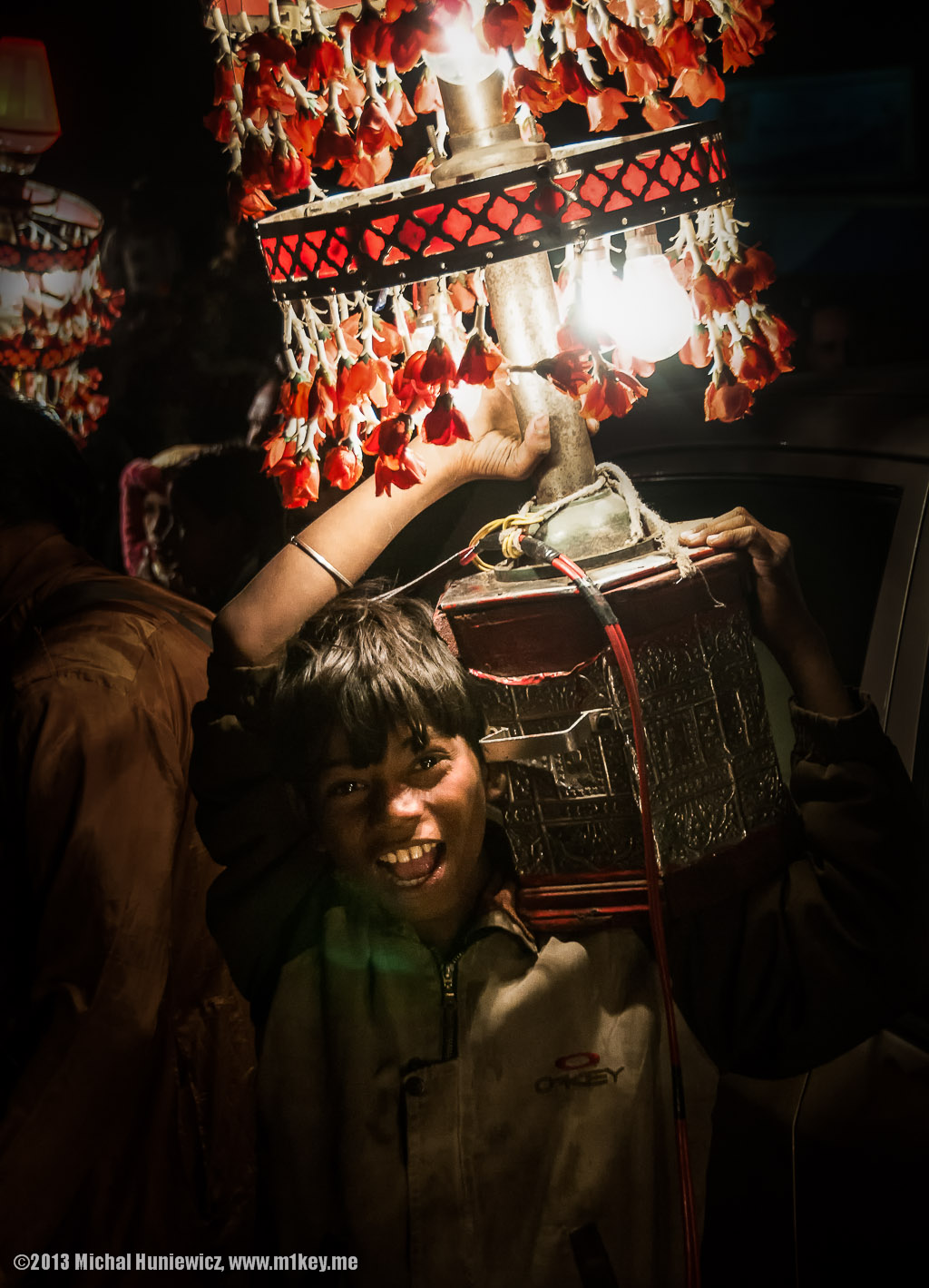Indian Wedding Photography - M1key - Michal Huniewicz

A Kshatriya software developer, 28, graduate, height 183cm, invites enquiries from parents of well educated, fair and attractive daughters. Reply with photo and horoscope.
This is what Indian matrimonial advertisements often look like. Note the caste is specified and fair (pale) skin preferred, which should make sense to you if you know about India or at least had a while to read the descriptions in my Highlights from India gallery. The future wife is not even addressed directly - her parents are.
During my trip to India I saw a couple of weddings and, as expected, they don't resemble Western ones much. This high-ISO gallery will give you an idea of what it looks like, and tell you a bit about the institution of marriage in India, various traditions associated with it, and so on. I didn't describe the customs in great detail because I didn't find them so interesting.
In search of good Indian music, continued... Hidayat Inayat Khan, the composer. The music has rather little to do with weddings. Fun fact: I was his driver once (true story).
Thanks: Asha (captions), Pooja (captions), Shiv Shanker (captions), Vaishakh (captions).
Sources: 1,
2,
3,
4,
5,
6,
7,
8,
9,
10,
11,
12,
13,
14,
15,
16,
17,
18,
19.
Uploaded on: 2013-02-17.
Guard
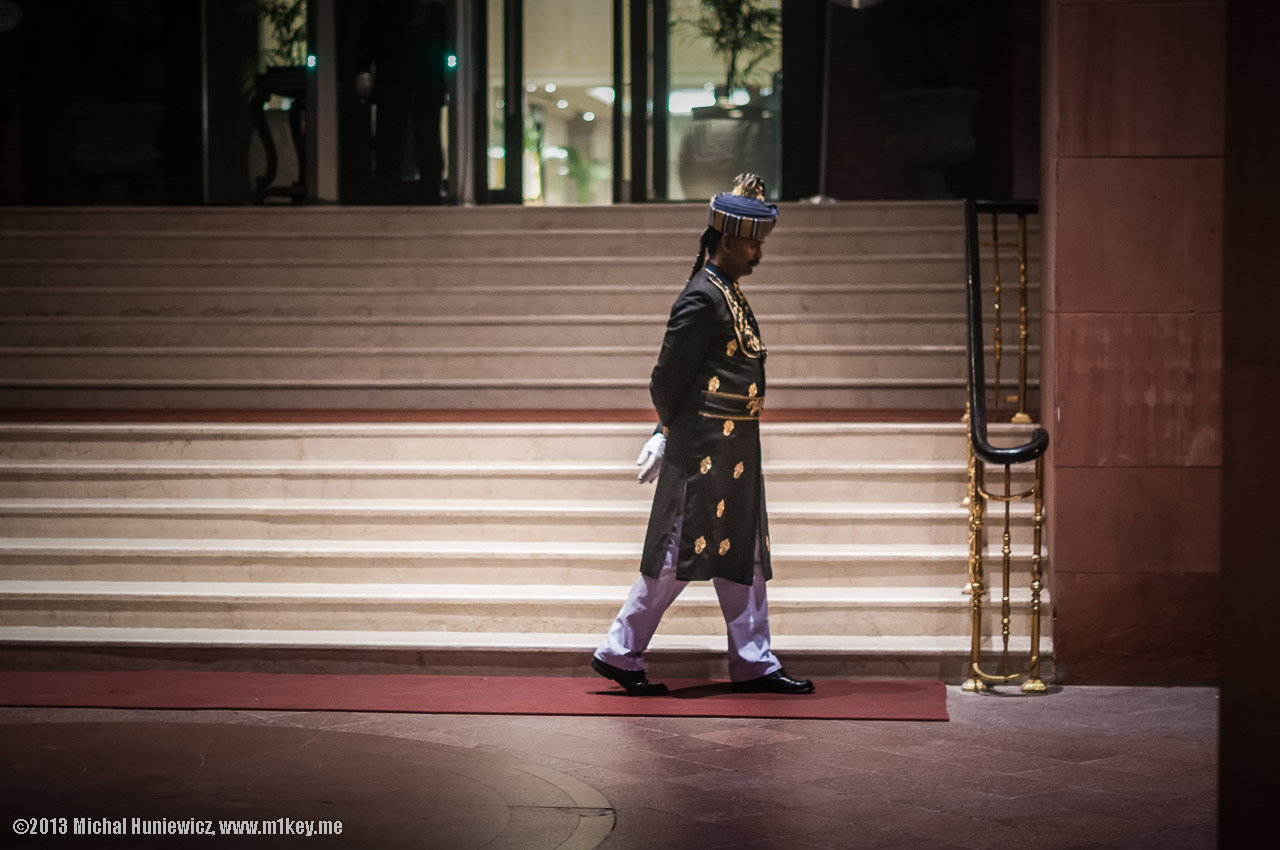
While there is usually a priest present, the marriage still has to be registered separately with secular authorities.
Dancing in the streets

Groom
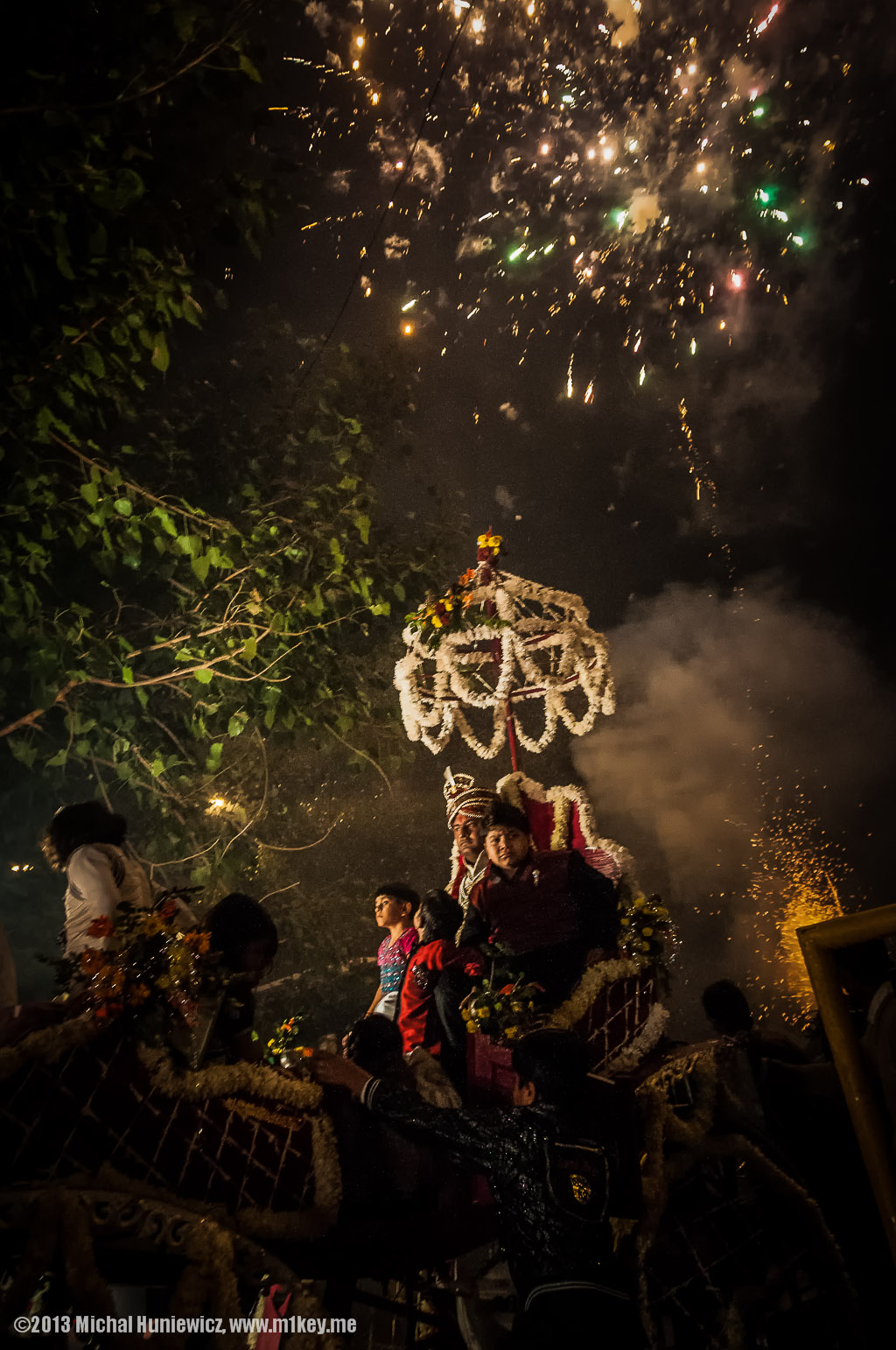
Behind the scenes

Marriage might be the most important event in a Hindu family. [4, p. 86] Contrary to Western culture, in India marriage is more of a union of two families, driven usually by more pragmatic reasons than love.
Can you see the naked statue in the poster in the background? His name is Bahubali; according to Jainism he was the first human in this half-time cycle to attain liberation (nirvana) [7], when he realised the transience of temporal affairs, and renounced the world. [8] The Digambara monks of Jainism (it's a major Jain sect) wear no clothes either, but that only applies to men - women have to be reborn as men to achieve liberation (and they are not allowed naked in the public). Another Jain sect, Svetambara, disagrees. [9]
Here's a video of naked Digamber monks.
Lamp boy
Amrutha
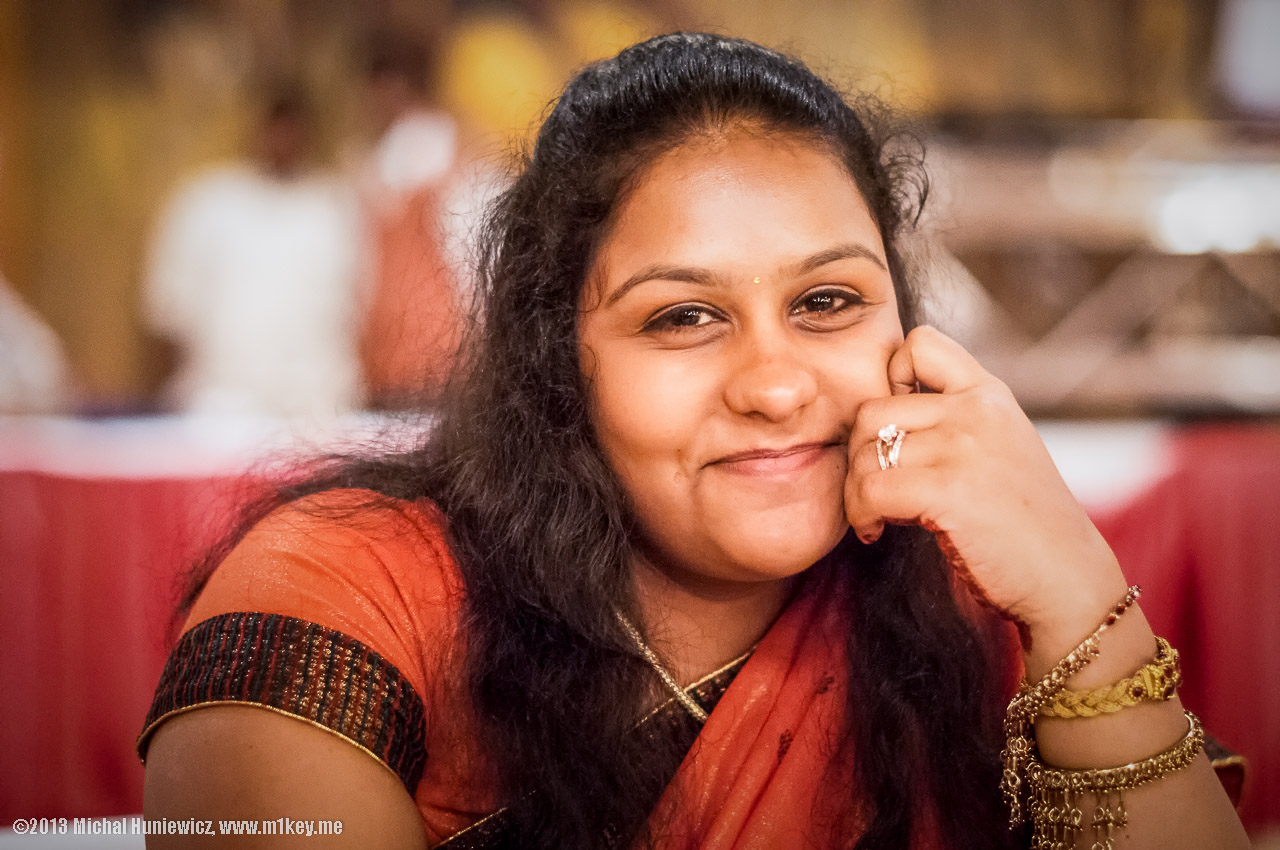
In the picture, a girl named Amrutha flirting with the lens. As you can see, Indians love gold. When India began to import gold and silver in the 16th century, only the latter was turned into currency. [18, ch. 4]
Divya & Asha
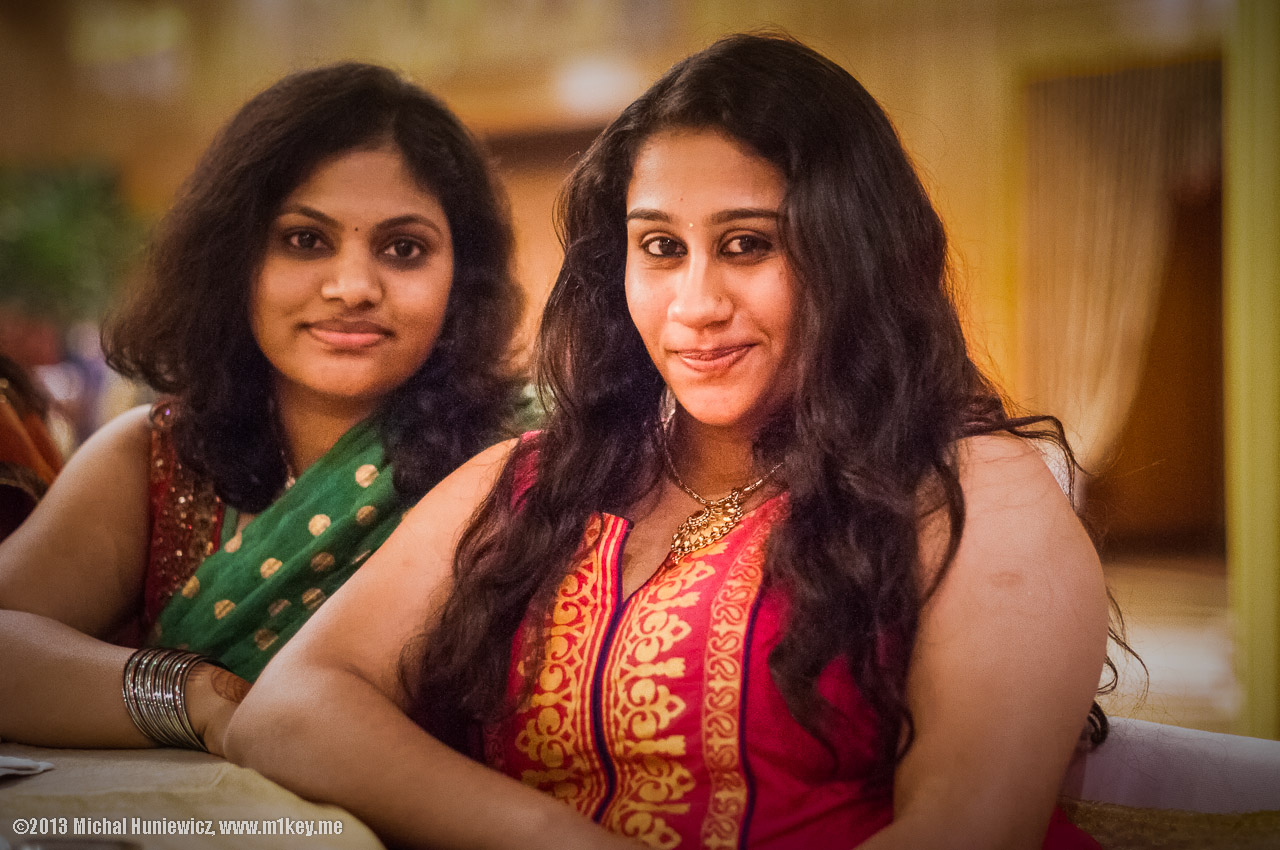
Ayushi
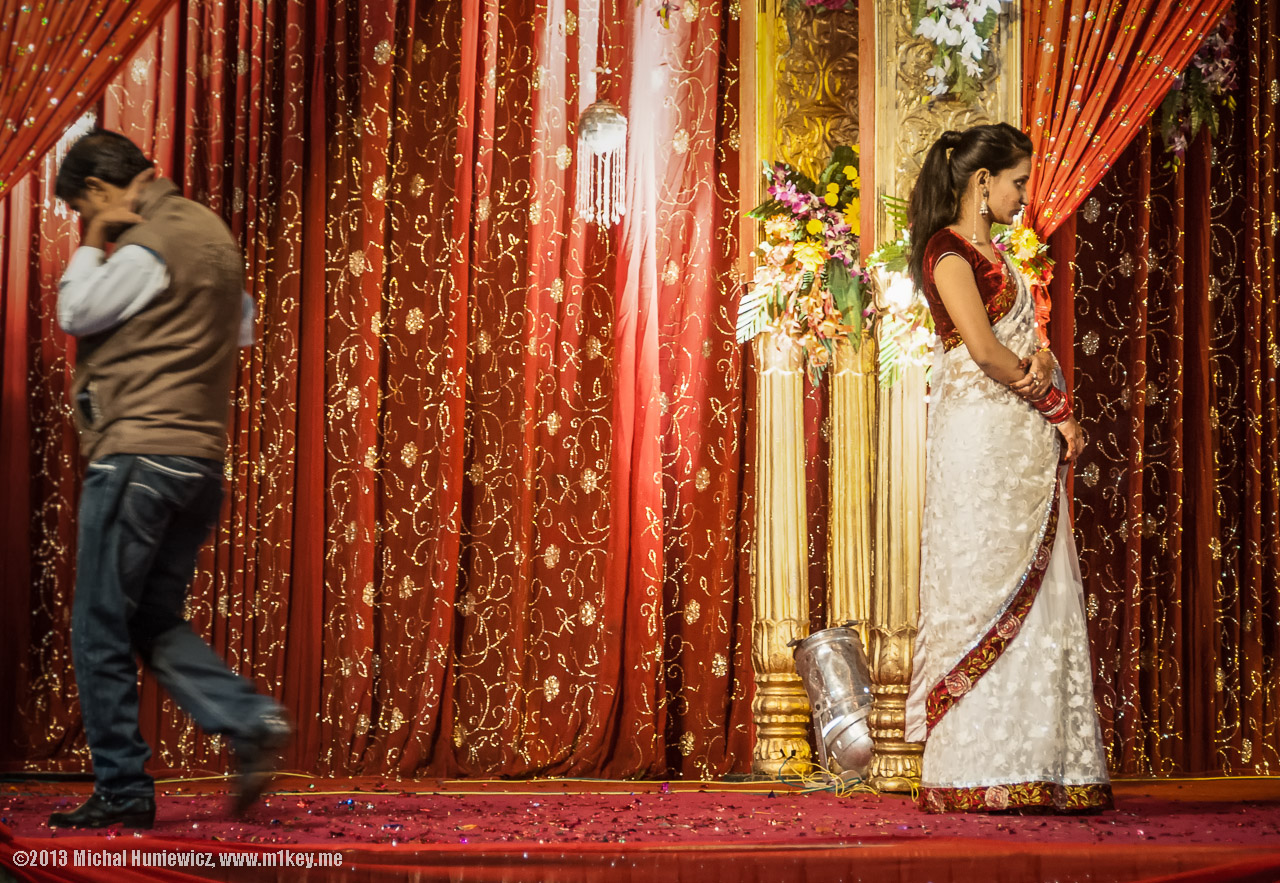
It is usually the man who proposes, but women proposing (many men's worst nightmare) are not unheard of. [3]
Smile now
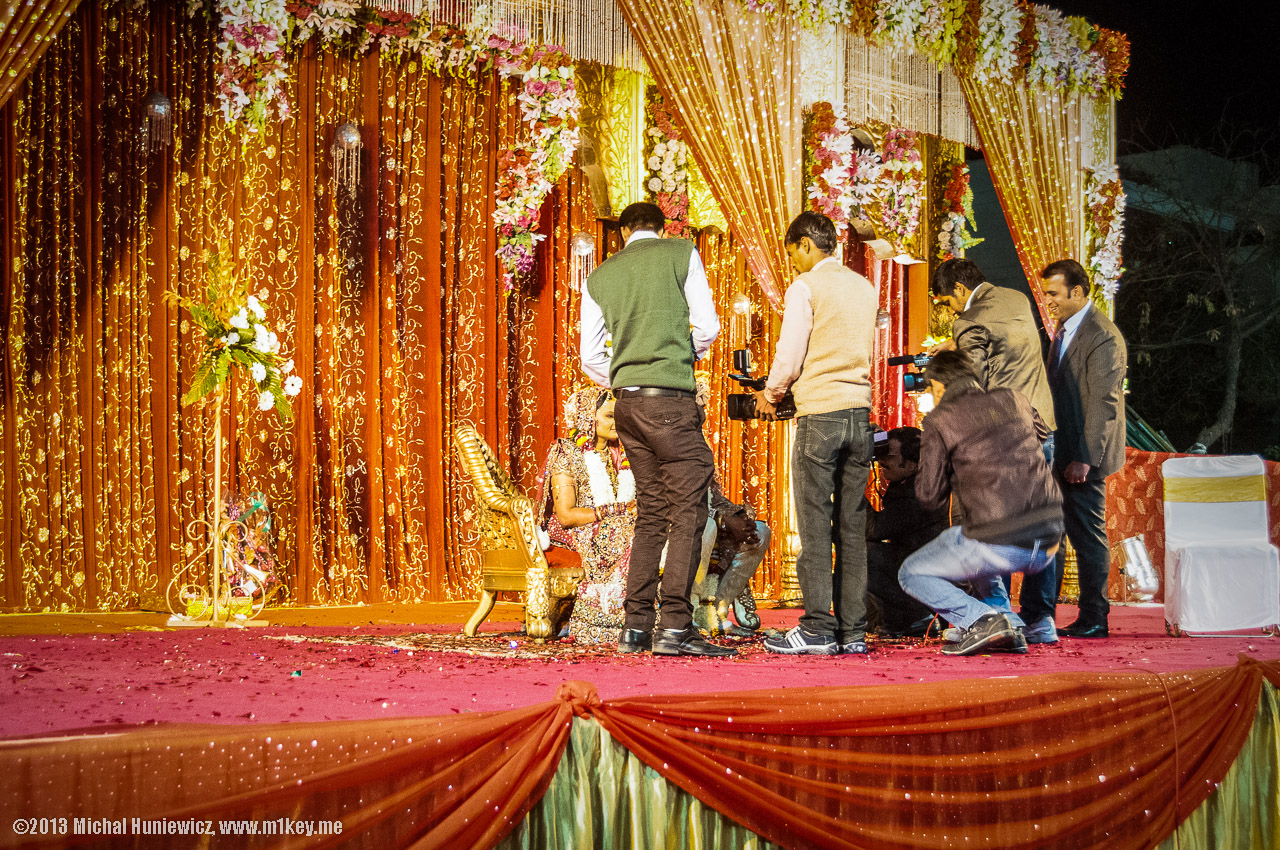
The wedding you can see here is of a Vaishya couple - from the Merchant caste, which is usually wealthy, but considered low (it's the third caste out of four).
First comes marriage, then comes love
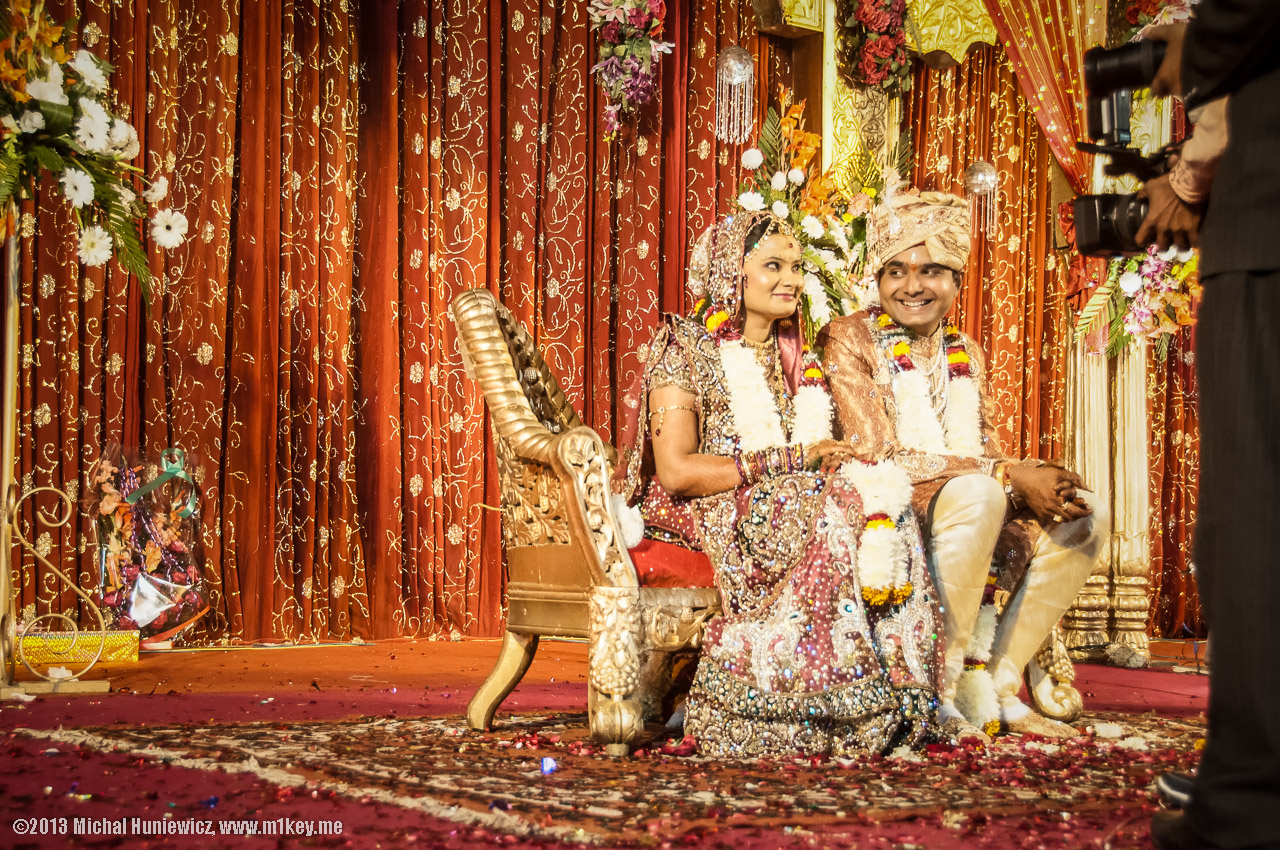
It does not mean the marriage is forced, and Indian singles apparently have no problem trusting relatives to find them a match. [5] They believe that since they get a carefully selected partner from a similar background, comparable intelligence, and so on, the relationship will last and lead to true love.
Horoscopes and auspicious days play a large role (especially for orthodox Brahmin families [4, p. 88]). So it's not quite the Western "try before you buy" approach, but might be quite similar to various online match-making services.
The so called love-marriages are becoming more popular, especially among Westernised Indians who have their own source of income and can afford to be more independent from their parents (just like their own source of income - from weaving - helps Muslim women I met in the West Bank gain some independence from the husband).
Family photos
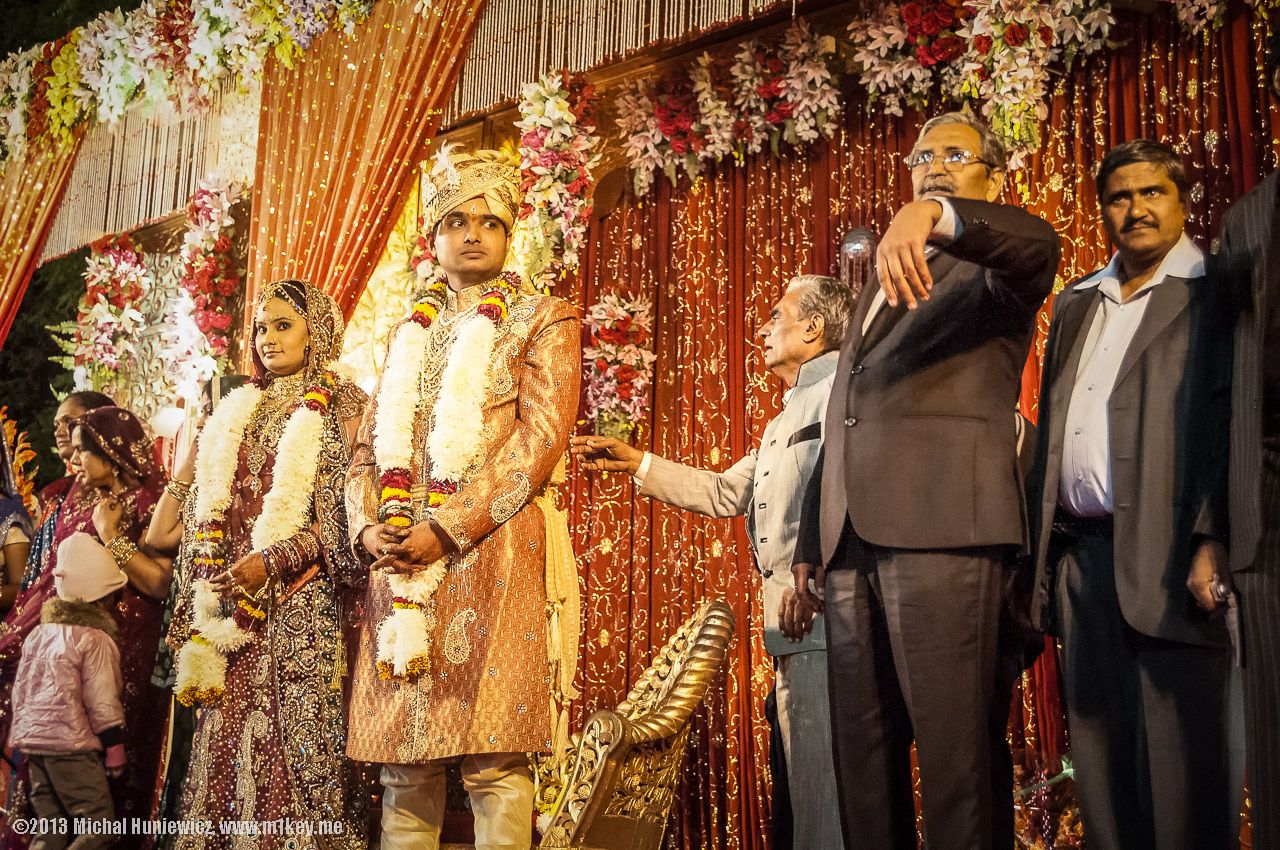
Once a groom/bride candidate is found, a meeting is arranged and it's apparently okay for either of the young people to say no, and ask for another one, although I wonder how many times this can happen - I'm sure each time you say no, you are under more pressure to say yes next time.
The practice is not restricted to Hindus; it applies to Indian Jans, Sikhs, Muslims, and Christians.
What brides often do and what I found quite disturbing, is the practice of skin bleaching - they want to be paler for the wedding. And so there are bleaching clinics all across India, and there is a bleaching cream called Fair & Lovely. The advertisements featured depressed, dark-complexioned women, who then found new, better jobs and boyfriends after lightening their skin [17]. I personally had a beautiful Indian girl complaining to me about her dark skin, and had to assure her she was perfect (she was); hopefully the message will spread.
The bride in the picture had her skin artificially lightened for the wedding too, as I managed to find out.
Pooja means worship
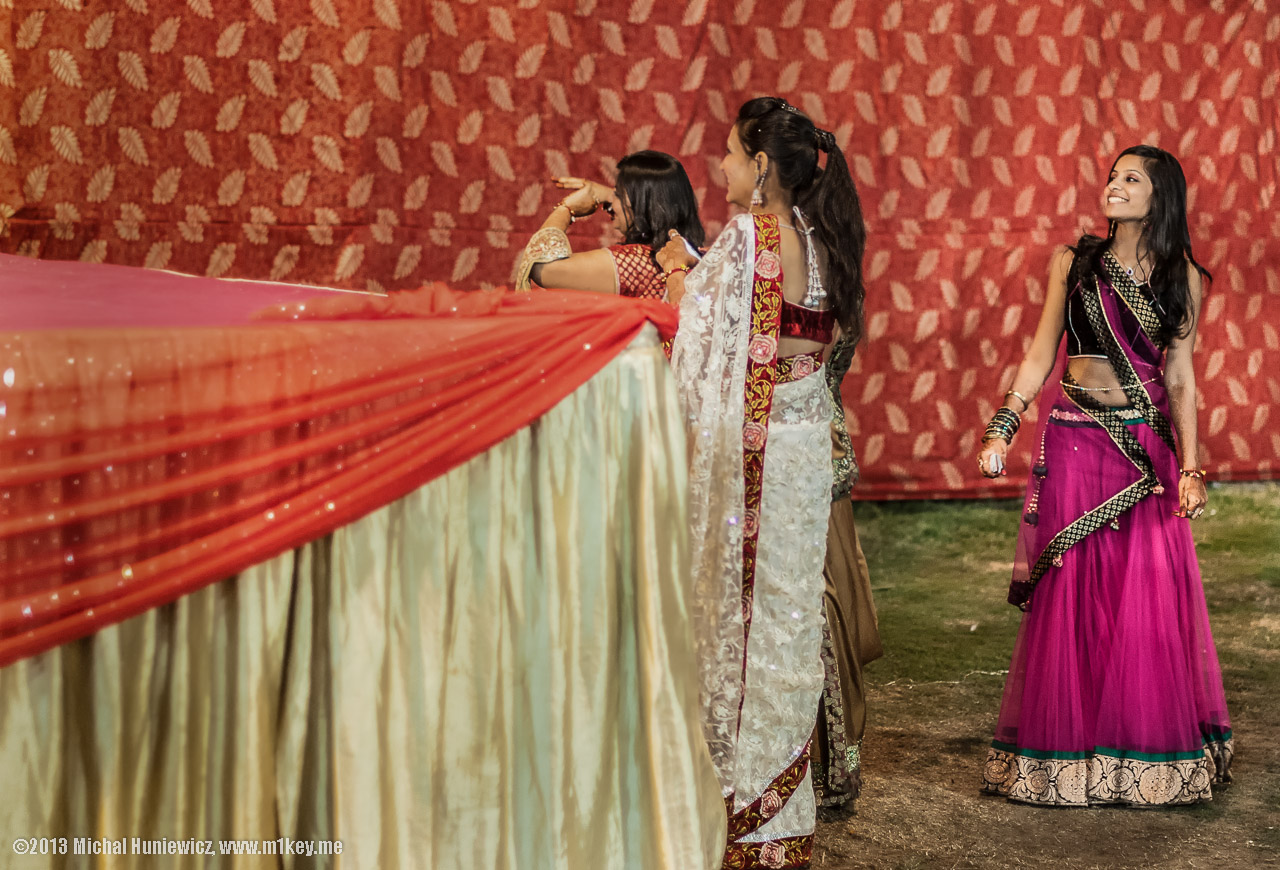
Many Indian men, especially in rural areas, prefer their future wives to be virgins. But, to quote Robin Williams, "everyone who's ever been with a virgin will be like... (frowns with mixed emotions)". But in urban and more progressive areas people supposedly don't care as much.
If you like the dress she's wearing, and would like to get a similar one, it's called lehenga.
Yellow balloon
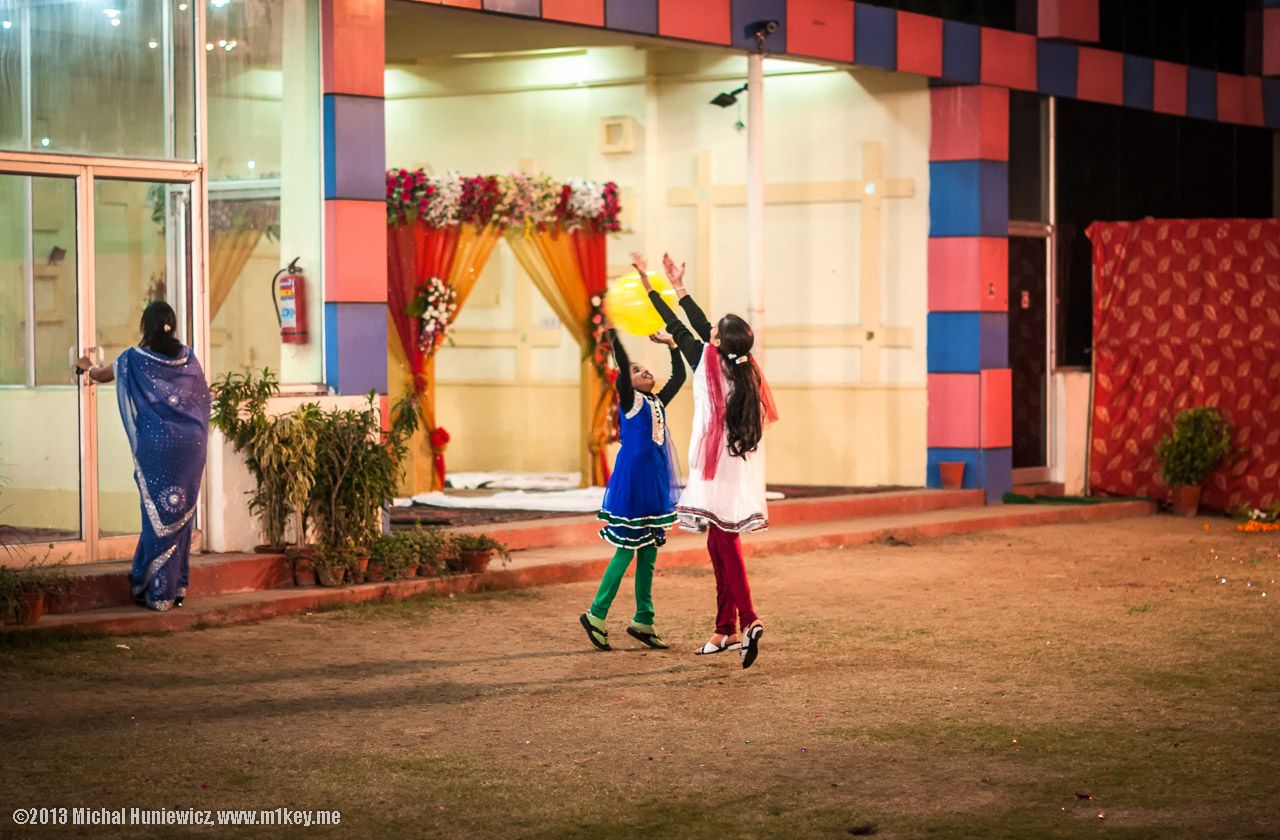
In medieval times even infant marriage was permitted, for political reasons (forging alliances). [13] Child marriage can be seen as a way of preserving the caste system, as it prevents people from marrying outside caste; and as making sure the child does not marry someone of a different faith. Before child marriage became common for boys, for the higher castes the ideal union was between a man of over 20 and a girl one-third his age, before her first menstruation. [18, ch. 2] In the 19th century, Ram Mohan Roy, a Hindu brahmin, outraged orthodox Hindus when he wrote against child marriage. [6, ch. 6]
These days, child marriage affects mostly poor people who see it as a way of making the child's future better. Child marriage also ensures there is no pre-marital sex. Statistically, early married girls have a higher mortality rate, and so do infants born when their mother is under 18.
There have been laws introduced (The Child Marriage Restraint Act of 1929 and The Prohibition of Child Marriage Act of 2006) and programmes dedicated to delaying young marriages across the nation.
Child marriage is another thing that Indians and European gypsies (who are originally from India) have in common. I have briefly described them in my Transylvania gallery.
I received a flower from one of those girls.
Adjustment
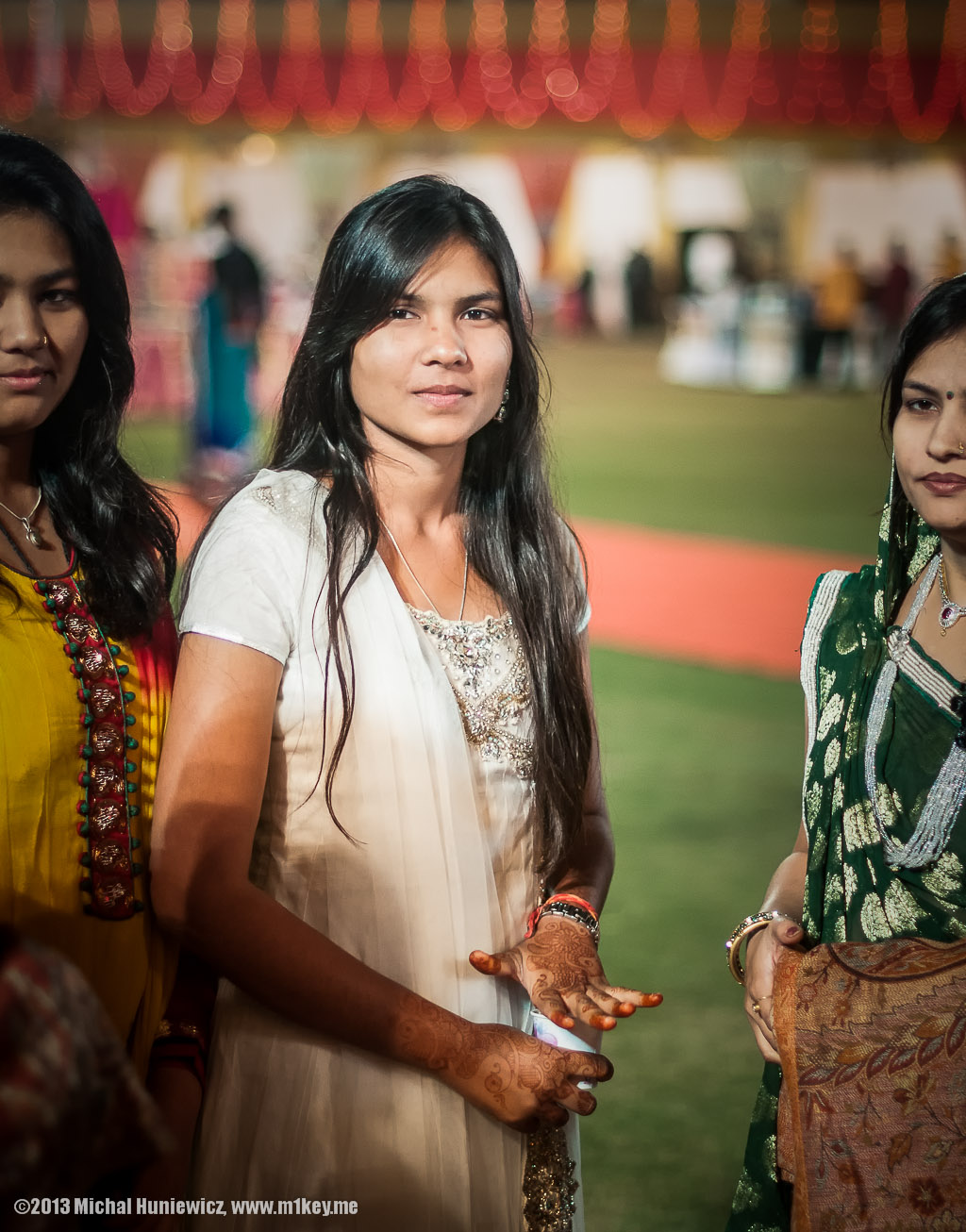
Unless she doesn't move in, as it is now more and more often the case.
Consummation
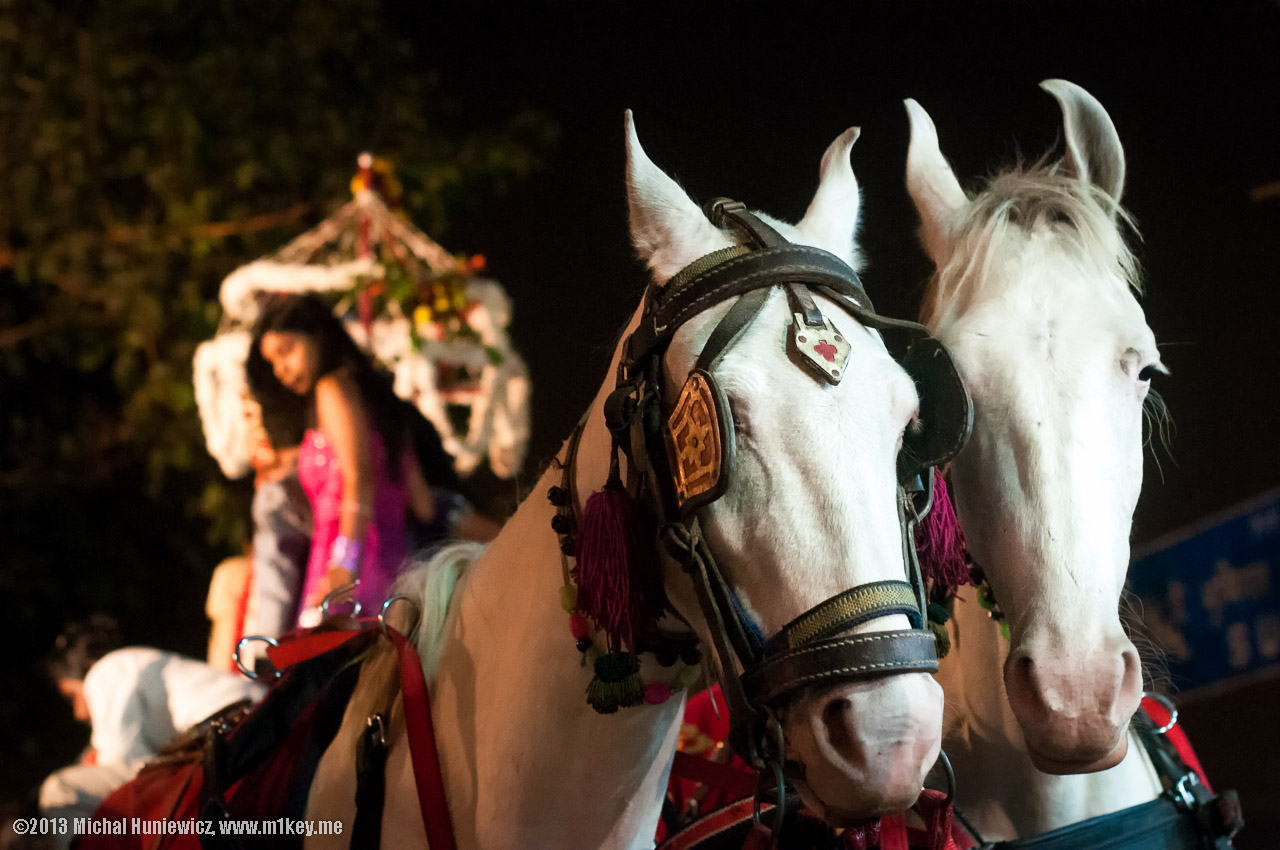
Pooja & Ayushi
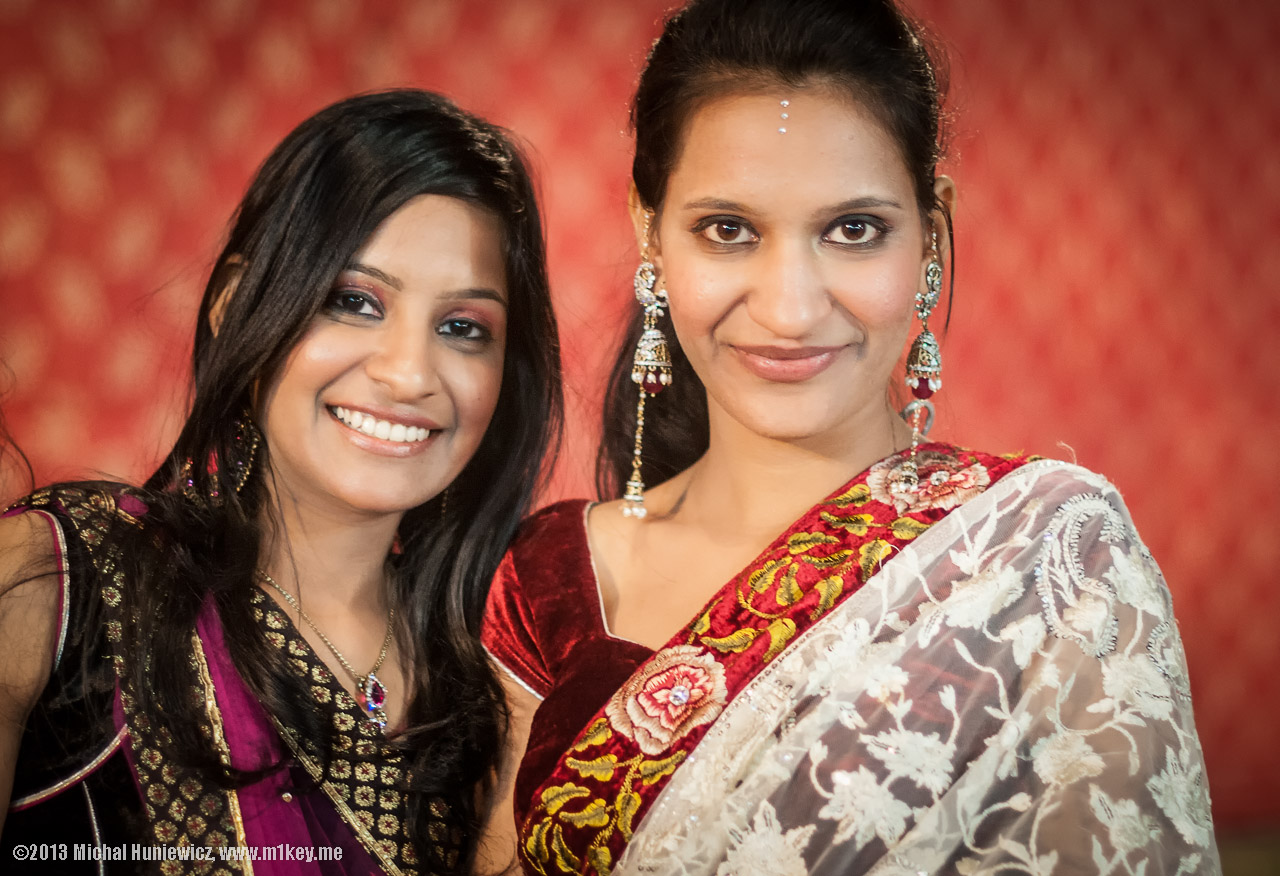
India is also a country where a social element of a third gender exists. The hijras are physiological males who have a feminine gender identity (sometimes they are eunuchs). Some Indians believe that whatever hijras say comes true, so they don't want to mess with them. They often demand money in public places using obscene gestures, profane language, and sexual advances; they are invited (or come uninvited) to various religious ceremonies where they play instruments and dance in sexually suggestive way. They bring good luck and fertility. [16] Unfortunately, I haven't encountered any.
But they did come after the wedding you can see in this picture - directly to the bride's house. Want to watch a nice clip on hijras including one dancing? (Now try to get that song out of your head!)
Nirbhaya & Pooja
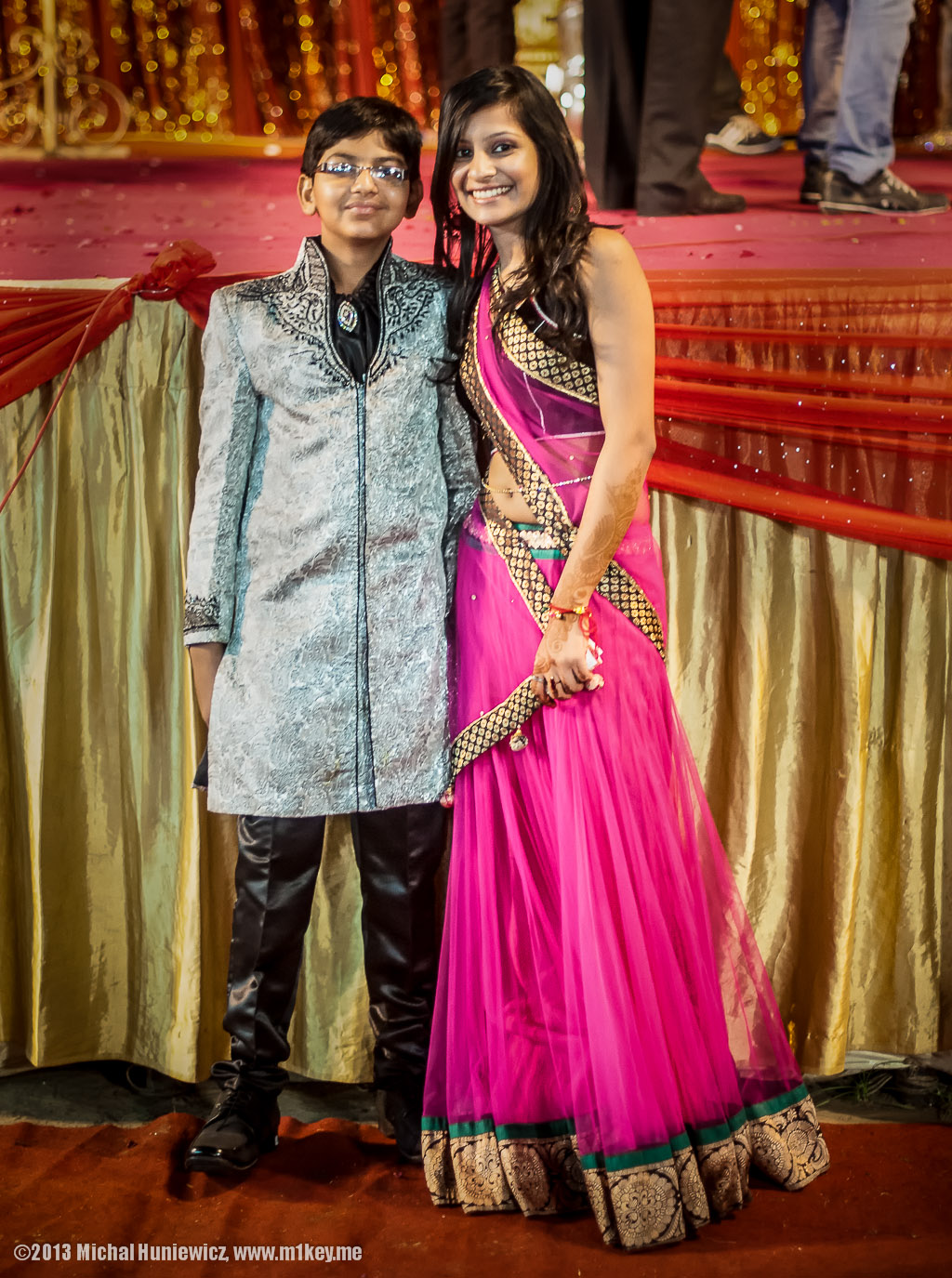
People after a divorce, as well as widows and widowers (and people after 30), cannot be too picky if they want to get married again. Their matrimonial value goes down as if they had brought bad luck.
How do you like Indian weddings? You do? If you're not Indian, you can still marry an Indian person, provided their family is modern enough to accept you. If you're not Indian, and want to get married to a non-Indian person in India with a proper Indian wedding, you can - it can all be arranged. Finally, if you'd like a fake Indian wedding for the sake of it, that can also be organised - I met a chap from a company that will organise your own Indian wedding, together with musicians and guests. It was even hinted to me that a gay wedding shouldn't be a problem - after all, you're the paying customer!
